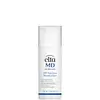What's inside
What's inside
 Key Ingredients
Key Ingredients

 Benefits
Benefits

 Concerns
Concerns

 Ingredients Side-by-side
Ingredients Side-by-side

Water
Skin ConditioningEthylhexyl Isononanoate
EmollientNiacinamide
SmoothingGlyceryl Stearate
EmollientPEG-100 Stearate
Glycerin
HumectantHydroxyethyl Acrylate/Sodium Acryloyldimethyl Taurate Copolymer
Emulsion StabilisingC10-30 Cholesterol/Lanosterol Esters
EmulsifyingGlycereth-26
HumectantPhenoxyethanol
PreservativeLinoleic Acid
CleansingHydroxypropyl Bispalmitamide Mea
EmollientPotassium Cetyl Phosphate
EmulsifyingXanthan Gum
EmulsifyingTocopheryl Acetate
AntioxidantHydrolyzed Caesalpinia Spinosa Gum
AbsorbentOleth-3 Phosphate
Oleic Acid
EmollientEthylhexylglycerin
Skin ConditioningCaesalpinia Spinosa Gum
Skin ConditioningPolysorbate 60
EmulsifyingSorbitan Isostearate
EmulsifyingHydrolyzed Rice Protein
Skin ConditioningDisodium EDTA
Thioctic Acid
AntioxidantSodium Hyaluronate
HumectantPalmitic Acid
EmollientStearic Acid
CleansingSodium Bisulfite
AntioxidantPotassium Sorbate
PreservativeSodium Benzoate
MaskingPhosphoric Acid
BufferingTetrasodium EDTA
Water, Ethylhexyl Isononanoate, Niacinamide, Glyceryl Stearate, PEG-100 Stearate, Glycerin, Hydroxyethyl Acrylate/Sodium Acryloyldimethyl Taurate Copolymer, C10-30 Cholesterol/Lanosterol Esters, Glycereth-26, Phenoxyethanol, Linoleic Acid, Hydroxypropyl Bispalmitamide Mea, Potassium Cetyl Phosphate, Xanthan Gum, Tocopheryl Acetate, Hydrolyzed Caesalpinia Spinosa Gum, Oleth-3 Phosphate, Oleic Acid, Ethylhexylglycerin, Caesalpinia Spinosa Gum, Polysorbate 60, Sorbitan Isostearate, Hydrolyzed Rice Protein, Disodium EDTA, Thioctic Acid, Sodium Hyaluronate, Palmitic Acid, Stearic Acid, Sodium Bisulfite, Potassium Sorbate, Sodium Benzoate, Phosphoric Acid, Tetrasodium EDTA
Water
Skin ConditioningGlycerin
HumectantButyrospermum Parkii Butter
Skin ConditioningC12-15 Alkyl Benzoate
AntimicrobialPropanediol
SolventPolysilicone-11
C10-18 Triglycerides
EmollientCaprylic/Capric Triglyceride
MaskingPentaerythrityl Tetraisostearate
EmollientCetearyl Olivate
Sorbitan Olivate
EmulsifyingCetyl Alcohol
EmollientPhenoxyethanol
PreservativeCeramide NP
Skin ConditioningPolyacrylate-13
Hydrogenated Polyisobutene
EmollientEthylhexylglycerin
Skin ConditioningPolyglyceryl-10 Laurate
Skin ConditioningEthylhexyl Palmitate
EmollientLaureth-12
EmulsifyingSorbitan Isostearate
EmulsifyingHdi/Trimethylol Hexyllactone Crosspolymer
Polymethylsilsesquioxane
Citric Acid
BufferingSodium Hydroxide
BufferingWater, Glycerin, Butyrospermum Parkii Butter, C12-15 Alkyl Benzoate, Propanediol, Polysilicone-11, C10-18 Triglycerides, Caprylic/Capric Triglyceride, Pentaerythrityl Tetraisostearate, Cetearyl Olivate, Sorbitan Olivate, Cetyl Alcohol, Phenoxyethanol, Ceramide NP, Polyacrylate-13, Hydrogenated Polyisobutene, Ethylhexylglycerin, Polyglyceryl-10 Laurate, Ethylhexyl Palmitate, Laureth-12, Sorbitan Isostearate, Hdi/Trimethylol Hexyllactone Crosspolymer, Polymethylsilsesquioxane, Citric Acid, Sodium Hydroxide
 Reviews
Reviews

Ingredients Explained
These ingredients are found in both products.
Ingredients higher up in an ingredient list are typically present in a larger amount.
Ethylhexylglycerin (we can't pronounce this either) is commonly used as a preservative and skin softener. It is derived from glyceryl.
You might see Ethylhexylglycerin often paired with other preservatives such as phenoxyethanol. Ethylhexylglycerin has been found to increase the effectiveness of these other preservatives.
Glycerin is already naturally found in your skin. It helps moisturize and protect your skin.
A study from 2016 found glycerin to be more effective as a humectant than AHAs and hyaluronic acid.
As a humectant, it helps the skin stay hydrated by pulling moisture to your skin. The low molecular weight of glycerin allows it to pull moisture into the deeper layers of your skin.
Hydrated skin improves your skin barrier; Your skin barrier helps protect against irritants and bacteria.
Glycerin has also been found to have antimicrobial and antiviral properties. Due to these properties, glycerin is often used in wound and burn treatments.
In cosmetics, glycerin is usually derived from plants such as soybean or palm. However, it can also be sourced from animals, such as tallow or animal fat.
This ingredient is organic, colorless, odorless, and non-toxic.
Glycerin is the name for this ingredient in American English. British English uses Glycerol/Glycerine.
Learn more about GlycerinPhenoxyethanol is a preservative that has germicide, antimicrobial, and aromatic properties. Studies show that phenoxyethanol can prevent microbial growth. By itself, it has a scent that is similar to that of a rose.
It's often used in formulations along with Caprylyl Glycol to preserve the shelf life of products.
Sorbitan Isostearate is an emulsifer and cleaning agent. It is created from isostearic acid and sorbitol.
As an emulsifier, Sorbitan Isostearate prevents oils and water from separating.
Due to its isostearic acid base, it may not be safe for Malassezia or fungal acne.
Learn more about Sorbitan IsostearateWater. It's the most common cosmetic ingredient of all. You'll usually see it at the top of ingredient lists, meaning that it makes up the largest part of the product.
So why is it so popular? Water most often acts as a solvent - this means that it helps dissolve other ingredients into the formulation.
You'll also recognize water as that liquid we all need to stay alive. If you see this, drink a glass of water. Stay hydrated!
Learn more about Water